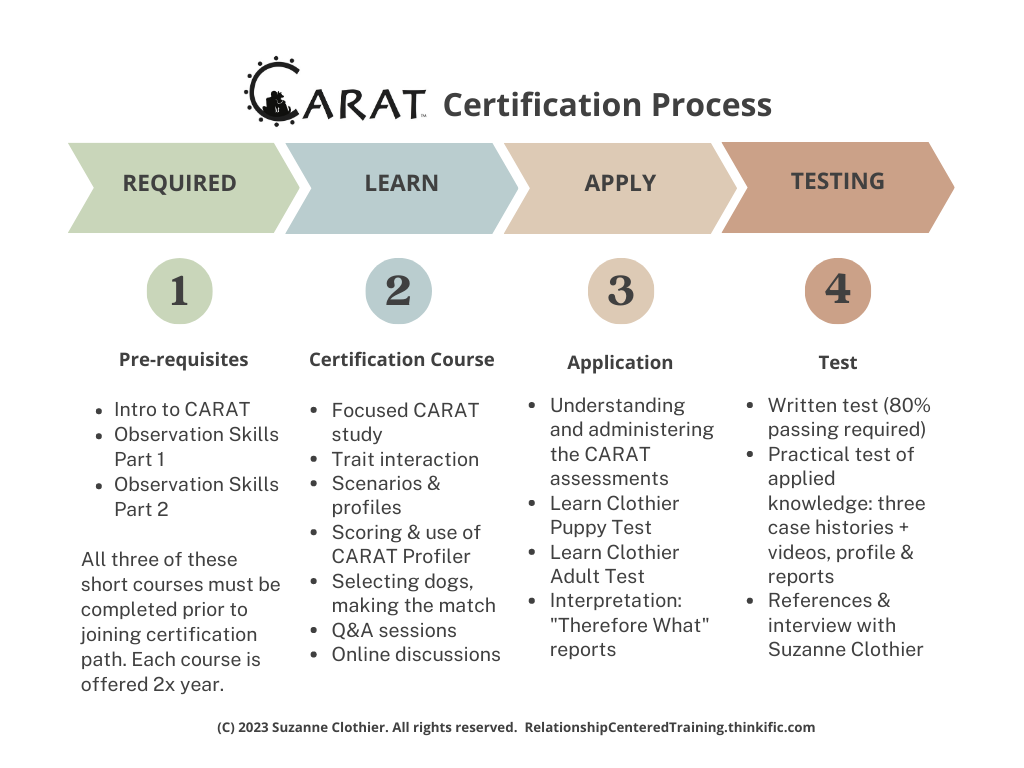
CARAT Changes Everything: See the Individual Dog
The Clothier Animal Response Assessment Tool isn’t just another temperament test—it’s a complete paradigm shift that moves you beyond breed assumptions to truly seeing the individual dog in front of you. When you understand how 21 specific temperament traits interact within each unique dog, every choice you make becomes precisely calibrated for that individual.
What Makes CARAT Different:
- Beyond Breed Stereotypes: Assess dogs as individuals, not breed generalizations
- 21 Detailed Traits: Comprehensive framework covering social confidence, environmental responses, and core temperament patterns
- Practical Application: Immediate use in matching dogs to homes, developing training plans, and identifying suitable candidates for specific roles
- Relationship-Centered Approach: Grounded in understanding rather than quick fixes
Professional Certification Path: This intensive 18-24 month certification program transforms how you evaluate and work with dogs. Starting with three prerequisite courses that build essential observation skills, you’ll progress through focused study, hands-on application, and rigorous testing to become a Certified CARAT Assessor.
Real-World Impact: Learn to administer both the Clothier Puppy and Adult assessment protocols, interpret detailed CARAT profiles, and translate complex behavioral information into actionable insights for handlers, shelters, and training programs.
Investment in Excellence: $1,800.00 with payment plans available. CEUs for major professional organizations. Scholarships and organizational discounts available.
Ready to see dogs differently? The certification journey begins with mastering observation skills and understanding temperament as the foundation for all meaningful work with dogs.

